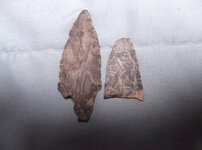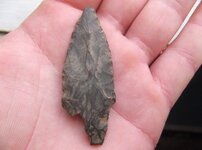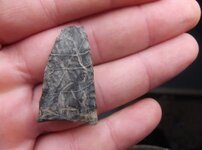CrazySlasher
Hero Member
Sadly, both are broken. I believe the larger one is an Adena. Pretty rare where I'm from! The smaller one, I'm not sure about. I don't know if it's flint and what typology it is. Any help would appreciated.
Amazon Forum Fav 👍
Attachments
Upvote
0






 Charlie
Charlie
